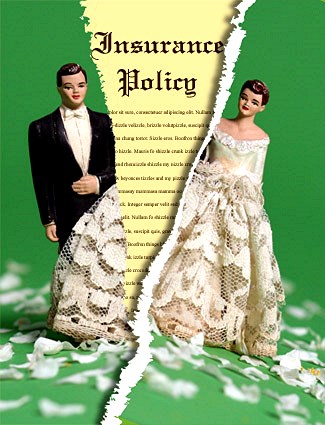Trevor Todd and Jackson Todd have over 60 years experience in handling contested estate matters including all aspects of contesting wills under the provision of wills variation found in S. 60 WESA.
The leading case Tataryn v Tataryn (1994) 2 SCR 807 clarified that most people would agree that an adult independent child is entitled to such consideration as the size of the estate and the testator’s other obligations may allow, after he for after firstly satisfying any legal obligations owed to a spouse or dependent children.
The court recognized that while the moral claim of an independent adult child may be more tenuous, a large body of case law existed that suggested that if the size of the estate, permitted and in the absence of circumstances which negate the existence of such an obligation, some provision for such children should be made in an estate.
The court was clear that the testator’s will should only be interfered with to the extent necessary to meet the testator’s legal and moral obligations and also that so long as the testator has chosen an option which is within the range of appropriate options for dividing his or her estate, the will should not be disturbed.
The two leading cases on the summary of overriding principles the courts will consider and a wills variation claim are Clucas estate (1999) 25 ETR 175 at para. 12 and later McBride v Voth 2010 BCSC 443 at paras 129-142.
Subsequently in Dundsdon v Dunsdon 2012 BCSC 1274 at para. 234 the court identified the following 10 considerations as those which have been accepted, in the post Tataryn era, as informing the existence and strength of a testator’s moral duty to independent children:
1. The relationship between the testator and the claimant, including abandonment, neglect and estrangement by one or the other;
2. The size of the estate;
3. The contributions if any, by the claimant;
4. Any reasonably held expectations to inherit of the claimant;
5. The standard of living of the testator and the claimant;
6. Gifts and bequests made by the testator outside of the will or previously by inter vivos gifts;
7. The testator’s reasons for any disinheritance;
8. The financial need another personal circumstances, including disability of the claimant;
9. Any misconduct or poor character of the claimant;
10. Competing claimants and other beneficiaries.
Estrangement
When adult children are disinherited by their parents on the basis of alleged estrangement, the courts will examine the relationship very closely to attempt to determine whether the disinherited child, or the parent, were more at fault than the other for the estrangement.
Estrangement situations often present factual problems for the court to determine in wills variation claims, and the modern judicial trend indicates that the courts will inquire into the role played by the testator in the estrangement, or the relationship breakdown, and where does seem to be largely the fault of her at the insistence of the testator, it will likely not negated testator’s moral duty, and may in fact, even enhance it.
The courts have become familiar with abandonment or purported estrangement between a child and an adult, and more times than not in recent judicial cases, the court has indicated that the it may discern a moral duty, as a means of rectifying the testator’s childhood neglect of the children in the event of abandonment. Gray v Gray 2002 BCCA 94.
See also Doucette v Clarke 2007 BCSC 1021.
The comments made by an appeal court judge in the Gray decision is often quoted with respect to claims brought by children who were abandoned early in life by the deceased:
“I cannot accept that a child so neglected for his first 18 years and then treated shabbily during a brief reconciliation can be said to forfeit the moral claims to a share in his or her father’s estate by abandoning any further effort to establish a relationship. The fault in this sad story lies with the father and, in my opinion, the onus to seek further reconciliation was on his shoulders. The testator gave the appellant virtually nothing in an emotional or material way, the will was his last opportunity to do right by his son. “
In J.R. v JDM 2016 BCSC 2265 the court dealt with a claim brought by a disinherited daughter who the deceased stated he had not seen for over 10 years as his reason for the disinheritance.
The daughters evidence was that she had been sexually and emotionally abused by her father, together with his lack of financial contribution to her education and general welfare, and this evidence was accepted by the court.
As is often the case in these factual estrangement cases, the daughter left home at age 15, and any attempt by her in subsequent years to make amends with her father was rejected by him.
She was not invited to his second wedding for example. The court found that the onus for repairing the relationship and seeking any form of reconciliation with the daughter rested squarely with the father, and his moral duty to her was enhanced as result of his blameworthy conduct.
In Baulne v Baulne Estate 2002 BCSC 1905 the parents of the claimant committed suicide together, taking with them. Their disabled son. The claimant was the only surviving child of the deceased couple and the disinherited him in favor of their grandchildren.
The claimant had in fact refuse to allow his parents to visit their granddaughter, and in fact formalized it in a restraining order against his parents.
The court notwithstanding the truth of the will makers reason for the disinheritance, held that the deceased parents, particularly the mother, were jointly responsible for the estrangement and varied the will, such that the claimant receive 60% from each of his parents estates.
Even though it was found that the plaintiff treated his parents with disrespect, the court found on the evidence that while the plaintiff treated his parents, the court was unable to conclude that it negated the moral obligations of his parents otherwise owed to him.
Generally speaking, there is no law under the wills variation act that says children must be treated equally by a deceased parent, and it has been unusual for a sole disinherited child to receive greater than 50% of an estate in a wills variation claim.
One of the leading cases in wills variation claims in British Columbia is my own decision where I acted for plaintiff, in the case of Ryan vs. Delahaye 2003 BCSC 1081 , the reasons for judgment are which are on this website under my cases. In that decision the daughter had been left 20% of the estate while her brother had been left 80%. More importantly the brother had benefited much more beneficially from his parents then his sister, and his position in life was extremely contrary to that of the plaintiff. The court varied the Will and the sister was awarded an equal share as the brother.
The decision raised national news as many Canadians mostly in other provinces do not adhere to the principle that there is a moral obligation on a parent to provide for an adult independent child who is capable of being self-supporting. British Columbia is the only province in Canada who has such a law and we have had it for almost 100 years.
1. In McMain v. LeBlanc, 2013 BCSC 891, the will-maker’s estranged son was completely disinherited. The $330,000 estate was left solely to the will-maker’s niece. The court found that the will-maker was the primary cause of the estrangement, as he unilaterally withdrew from parent-child relationship. The plaintiff was awarded $180,000 from the estate.
Austin v Janzen 2006 BCSC 2100 was a case of mine where a mother abandoned her daughter at a young age and then later disinherited her, so we filed a wills variation action and took it to trial where we obtained an equal one third share.
19] The plaintiff’s claim is based on her mother’s treatment of her during her life and particularly on a claim that lack of contact with the mother was due to unilateral withdrawal by the mother. And in that regard I agree that the weight of the evidence establishes that the deceased did unilaterally withdraw from her relationship with her daughter Margaret when Margaret was a young child. I find on the evidence that the estrangement between mother and daughter was created by this unilateral withdrawal and I will say no more. At the point when the deceased attempted to bring her daughter back into the fold, more than a long distance telephone call to a young child would be required in the circumstances. In my view, there was no moral obligation on the child Margaret to attempt to initiate or revive a relationship with her mother beyond that point.
McBain v LeBlanc 2013 BCSC 891 adopted the same principle of law, following the BCCA in Gray v Gray Estate 2002 BCCA 94:
“In Gray v. Nantel, supra, nevertheless I would respectfully adopt the spirit of the following observation of Donald J.A. as follows at para. 17 of the judgment:
[17] I cannot accept that a child so neglected for his first 18 years and then treated shabbily during a brief reconciliation can be said to forfeit the moral claim to a share in his father’s estate by abandoning any further effort to establish a relationship. The fault in this sad story lies with the father and, in my opinion, the onus to seek further reconciliation was on his shoulders. The testator gave the appellant virtually nothing in an emotional or material way; the will was his last opportunity to do right by his son.
[90] Here, too, the testator had one last opportunity to behave after the manner of a judicious parent and recognize his moral obligation to his son by means of his will. He failed in this.
[91] In my estimation, as in Gray, this case involves the testator’s unilateral withdrawal from the parent child relationship. I appreciate that there was occasional contact between the plaintiff and testator, but my overall finding is that the plaintiff wanted a relationship, and the testator, for whatever reason, could not be bothered.
[92] In my judgment, the testator cannot resort to his indifference to his parental responsibilities in life as a justification for avoiding his moral obligations to his only son in death.
Here are six cases where the court in a wills variation action varied the will to provide at least %50 to an adult child who was not adequately provided for in their parent’s will.
The cases will not apply to every disinherited adult child but are a good guideline where the court is likely to vary the will to provide at least half to an adult child.
Here are six short summaries of decisions where an adult child was awarded 50% or more of a parent’s estate:
1. McMain v. LeBlanc, 2013 BCSC 891, the will-maker’s estranged son was completely disinherited. The $330,000 estate was left solely to the will-maker’s niece. The court found that the will-maker was the primary cause of the estrangement, as he unilaterally withdrew from parent-child relationship. The plaintiff was awarded $180,000 from the estate.
2. Baulne v. Baulne Estate, 2002 BCSC 1905, the parents of the claimant committed suicide together, taking with them their disabled son. The claimant was the only surviving child of the deceased couple. For various reasons stated in their mirror wills, including the claimant’s refusal to allow them to have access to their grandchild, the deceased couple disinherited the claimant from their estates, which had a combined net value of $467,000.
The claimant’s refusal to allow his parents to visit their granddaughter was true, and in fact, formalized in a restraining order obtained by the claimant. Notwithstanding the truth of the will-makers’ reason for the disinheritance, the court held that the deceased parents, particularly the mother, were jointly responsible for the estrangement, and varied the will such that the claimant received 60% from each of his parents’ estates. The defendant beneficiaries of the wills were the nieces and nephews of the claimant’s deceased parents.
3. Schipper v Schipper Estate 2010 BCSC 1067
The Plaintiff adult daughter was only child of the testator and her husband. The daughter had very close relationship with her parents until about three years before the testator’s death. The Testator’s will gave 25 per cent of estate to the daughter, 50 per cent to an adult nephew J, and 25 per cent to adult nephew A .
The Testator’s rationale was that daughter had not visited her for three years, had not shown interest in her parents, and was not in need of financial assistance .The daughter brought action for wills variation of testator’s will under Wills Variation Act to make adequate provision for her and the action was allowed. The daughters share was increased to %50 with J receiving 2/3 of the remaining and one third of the remaining to nephew A. Daughter found to be loving ,faithful child. The daughter’s claim was not based on financial need as her combined assets with her husband were $980,000.
The sufficiency of reasons for disinheritance was taken as part of the question of whether reasons of the testator were rational .
The testator overreacted to perceived lack of interest by daughter .the testator had little factual information about daughter’s financial need .The reasons expressed by testator for making dispositions were not rational , nor did they provide a proper basis for supporting provision made. The reasons did not have logical connection with reduced inheritance.
4. Pattie v. Standal 42 B.C.L.R. (3d) 211 a child never saw his father again after age seven due to a divorce.
The child’s mother did not receive child support. The deceased left his estate to his common law wife of two years.
There was no memorandum to the will or other evidence as to why the child was disinherited.
The court awarded the child 50% of the estate on the basis of both the failure to meet the moral obligation, as well as failing his legal obligation to support his child during his lifetime.
5. Gray v Gray Estate 2002 BCCA 94:
(89) I cannot accept that a child so neglected for his first 18 years and then treated shabbily during a brief reconciliation can be said to forfeit the moral claim to a share in his father’s estate by abandoning any further effort to establish a relationship. The fault in this sad story lies with the father and, in my opinion, the onus to seek further reconciliation was on his shoulders. The testator gave the appellant virtually nothing in an emotional or material way; the will was his last opportunity to do right by his son.
[90] Here, too, the testator had one last opportunity to behave after the manner of a judicious parent and recognize his moral obligation to his son by means of his will. He failed in this.
[91] In my estimation, as in Gray, this case involves the testator’s unilateral withdrawal from the parent child relationship. I appreciate that there was occasional contact between the plaintiff and testator, but my overall finding is that the plaintiff wanted a relationship, and the testator, for whatever reason, could not be bothered.
[92] In my judgment, the testator cannot resort to his indifference to his parental responsibilities in life as a justification for avoiding his moral obligations to his only son in death.
6. Ryan v Delahaye Estate 2003 BCSC 1081, concluded that inter vivos (life time) transfers and assets passing by right of survivorship pass outside the estate, and are therefore not subject to a wills variance claim.
Nevertheless she ruled that the court can consider them when assessing, from the perspective of a judicious person, whether a parent has met his or her moral obligations to an adult child.
The court considered that the Deceased parents had paid for their son’s education and made interest-free loans to him. The parents had not provided similar benefits to their daughter.
Smith J. found that the 80/20 split in the will (lion’s share to the son) did not provide proper maintenance and support for the daughter.
The court ruled that an adequate, just and equitable distribution would give the daughter an equal share of the residue of the estate and varied the will to divide the residue equally between the two children.










